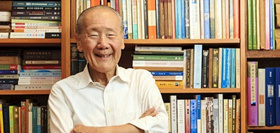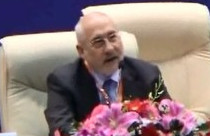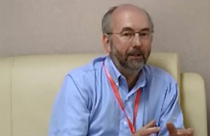Western discourse on B&R undergoes changes
Author : YU SONGXIN Source : Chinese Social Sciences Today 2019-07-03
Since the Belt and Road (B&R) initiative was proposed, the Western discourse on the issue, based on its deeply-rooted logic of statement, has been riddled with misconception, skepticism and criticism.
However, as increasingly fruitful results have been achieved in B&R construction, alongside changing international economic and political landscapes, the Western discourse on the initiative has undergone changes, revealing reflections of the West on some problems in its cognition.
Previous discourse
Discourse, as defined by French philosopher and social theorist Michel Foucault, is a body of statements. These statements belong to the same discourse structure. And underlying the structure is power that controls the strength of the discourse. On the basis of the underlying power and a given structure, discourse forms a statement.
The power behind the structure of Western discourse involves the ideology and values unique to the West, where a mature logic of statement has taken shape in the economic, political and cultural spheres.
In modern human history, the Western civilization represented by Europe and America has gradually established its dominant position in the world, and its discourse has shown salient features.
The US has been predominant in modern and contemporary times, but the entire Western discourse is not absolutely consistent. The inconsistency exists not only among different Western countries, but also between their varying logics of statement in different fields.
After Chinese President Xi Jinping put forward the B&R initiative in 2013, Western opinion swiftly responded and paid continuous attention. Many studies of Chinese scholars have indicated that influential Western media often used such expressions as “adventure,” “strategy,” “colonialism and imperialism” and “war” in B&R-related reports. Descriptions like “major opportunity” and “threat” were also visible.
Meanwhile, leaders of developed countries questioned, rejected and were even hostile to the Chinese initiative. By April 2019, Italy has been the sole country from the Group of Seven to formally join the B&R and to designate state leaders to attend the Second Belt and Road Forum on International Cooperation.
In 2015, the Chinese government released “Vision and Actions on Jointly Building the Silk Road Economic Belt and 21st-Century Maritime Silk Road,” making clear its fundamental principle of achieving shared growth through discussion and collaboration. However, the principle has not been accepted by mainstream discourse in the West. The root cause is that the rationale of the Western discourse fundamentally takes an opposite stance.
New discourse
In the recent six years, the clout of the B&R has been growing, and it has gradually won recognition from most countries in the world, which is also a process through which the initiative constantly breaks through the Western discourse. The process is mainly manifested in the following two aspects:
First, the steady progress made in B&R construction has laid a solid foundation for building new discourse. Moreover, with changes in the global economic and political landscapes, the West has begun to reflect on its previous discourse on the initiative as well as on power inherent to the discourse.
Over the past six years, the construction of the B&R has brought substantive mutual benefits. According to data from the Ministry of Commerce of China, non-financial direct investments made by Chinese enterprises in the 56 countries along the B&R amounted to $15.64 billion in 2018, growing 8.9% year on year. In terms of contracting foreign projects, Chinese enterprises signed 7,721 new contracts worth $125.78 billion with the countries along the routes, with a turnover of $89.33 billion, a year-on-year increase of 4.4%.
As of April 2019, China had inked 187 documents on jointly building the B&R with 131 countries and 30 international organizations. Nearly 5,000 foreign guests from more than 150 countries and over 90 international organizations attended the second international B&R forum held in Beijing from April 25 to 27. When it comes to the Group of Seven, Italian Prime Minister Giuseppe Conte came in person, while the UK, Germany, France and Japan delegated high-level representatives.
On April 26, during the forum, Die Welt of Germany devoted a full page to an article written by a journalist of the Chinese state media Xinhua News Agency, titled “New Silk Road helps revive Germany’s rust belt cities.”
The positive attitude doesn’t mean the Western logic of statement was abandoned. Their skepticism remains. Nonetheless, the attitude at least reveals that the B&R has been recognized to a certain extent.
Apart from Die Welt, Financial Times also published a full-page story “New foreign policy: A new realism on China” on March 21, 2019. Making reference to the B&R, the author cited the argument of diplomats and analysts that the US approach has created more fundamental problems for Europe. “The EU needs and wants to cooperate with China in an effort to save big multilateral agreements repudiated by the US,” according to the article.
To the West, B&R construction has yielded practical results that can never be ignored, but the West can hardly embrace new discourse and logic of statement outside its own discourse structure.
From the perspective of economic logic, the B&R can bring great opportunities to Western nations. It has also presented new discourse featuring non-confrontational, mutually beneficial cooperation, challenging the current Western discourse structure.
Reflective features
Discourse generated in a certain structure will not necessarily maintain the structure. Foucault said, “Discourse transmits and produces power; it undermines and exposes it, renders it fragile and makes it possible to thwart it.” That is because discourse will reflect on the structure it is in and make according adjustments. In the process, it will undermine the power inherent to the structure.
Since 2017, new discourse on the B&R emerging in the West has shown obvious reflective features. While these reflections point directly to the power mechanism behind the discourse structure, they also challenge the previous discourse based on the power mechanism. The phenomenon is particularly evident in the US where the resistance against the Chinese initiative has been strong.
On Nov. 3, 2017, Time magazine released its first-ever edition with a cover both in English and Chinese, declaring “China won.” A great length of eight pages was devoted to the article “Ports, Pipelines, and Geopolitics: China’s New Silk Road Is a Challenge for Washington.” It offered an introduction to international cooperation and massive infrastructure investments advanced by the China-proposed B&R initiative, along with censure of US President Donald Trump’s inadequacy in t him he area of domestic investment.
“Trump’s stalled attempts to renegotiate NAFTA have irked neighbors Canada and Mexico, while his announcement of America’s withdrawal from the Paris climate accord has left the world looking to China for leadership on this and other issues,” says the article.
Nonofficial discourse has raised big questions against the rationality of the logic of the official discourse and the underlying power mechanism, even adopted a completely different logic to negate it and rebuild related discourse.
On April 27, 2019, an opinion piece titled “Is China the world’s loan shark?” published in The New York Times criticized the accusation that the B&R is a cover for “debt trap diplomacy,” contending that the risks of the initiative are often overstated or mischaracterized, and suggesting that it is an attempt at globalization with Chinese characteristics. The reinterpretation of the initiative mirrors self-reflections in the Western discourse.
The disagreement in the West can be attributed to profound social and historical backgrounds. Brexit and Trump have caused extremely negative impacts on the globalization and free trade that the West has long advocated for, further widening the split in the Western society. In the meantime, realistic problems facing the West’s development and international trade have formed a stark contrast with the achievements of B&R construction.
Building positive discourse
Building positive discourse on the B&R should be grounded upon practical construction results. With the achievements of the initiative, suspicions from the West will fall flat. More and more countries and international organizations’ acknowledgement of the accomplishments of B&R construction will naturally result in positive discourse on the initiative.
Second, the rationale of discourse varies in different social strata and countries in the West, so efforts should be made to tailor the statement on the B&R to different problems and contexts of different countries.
In addition, it is difficult for the West to clarify such ideas as “achieving shared growth through discussion and cooperation,” “the community of shared future for mankind,” and “win-win cooperation,” so it is necessary to provide more detailed and deeper explanations and disseminate them effectively through the press of different countries.
To sum up, the West will continue paying attention to the B&R initiative. The building of new discourse on the B&R should be based on in-depth analysis and pose a challenge to the Western discourse in order to exert positive influences.
Yu Songxin is from the College of Humanities at Donghua University in Shanghai.
(Edited by Chen Mirong)
Interview with Wang Gungwu on significance of studying overseas Chinese
Wang Gungwu is a distinguished Australian historian who studies overseas Chinese. He currently works at the Faculty o...
-
On the rat/mouse of the zodiac
2020-02-20
-
Regional development calls for Huaihe culture’s soft power
2020-01-10
-
Archaeological discoveries unveil Maritime Silk Road
2020-01-06
-
China’s industrial art printing
2019-12-10
-
Yue-Gan Ancient Road: A journey into Hakka history
2019-05-13
-
The Lantern Festival in Dream of the Red Chamber
2019-02-18














 2011-2013 by www.cssn.cn. All Rights Reserved
2011-2013 by www.cssn.cn. All Rights Reserved